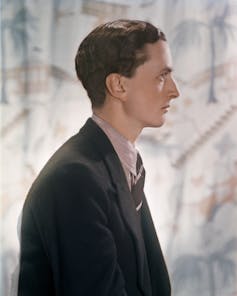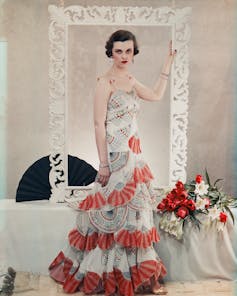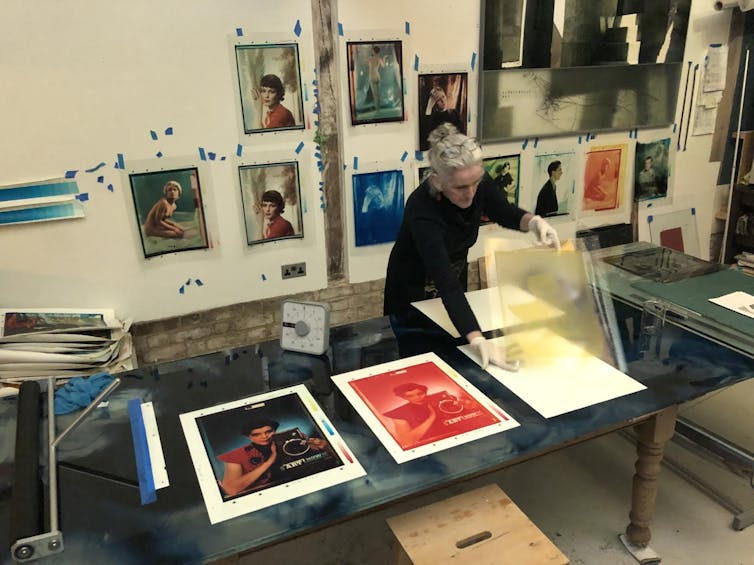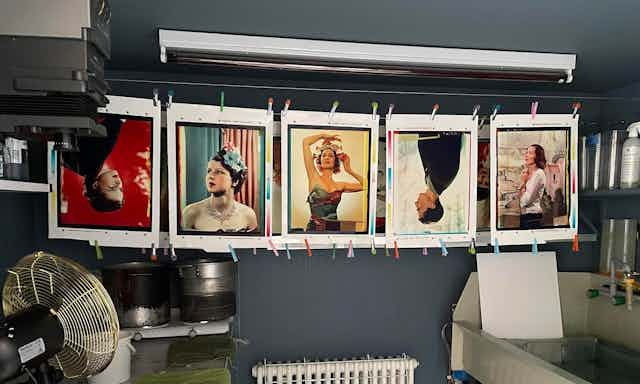A long-overdue exhibition of the work of photographer Yevonde Middleton (1893-1975) has opened at the National Portrait Gallery (NPG), London. Yevonde: Life and Colour is the first major exhibition since the gallery reopened its doors, following a three-year refurbishment.
Throughout her life, Yevonde was a vocal advocate for women. In her youth, she was a suffragette. And she championed women within photography throughout her long and successful career, gaining wide recognition in her own day. She is best known as a society portraitist and an early pioneer of colour photography at a time when commercial colour photography was new and there was widespread scepticism about its merits.

However, as with so many women artists, Yevonde’s work has been underrepresented by galleries. It wasn’t till 2021 that the NPG acquired a collection of Yevonde’s colour negatives creating its Yevonde Colour Archive. A painstaking digitisation process provided the opportunity to reassess this artist’s colour work – much of which has never been seen by the public.
As part of the Reframing Narratives: Women in Portraiture project, this exhibition, among other initiatives, signals the gallery’s intention to improve the representation of women in its holdings and exhibitions.
What to expect from the exhibition
The viewer is guided chronologically through Yevonde’s 60-year career, which began in 1914. Early, tentative society portraits in black and white soon give way to a confident handling of several famous sitters, such as actress Florence Lambert and actor, singer and activist Paul Robeson.
Read more: Yevonde: an introduction to the woman who pioneered colour photography
The show details her groundbreaking work from the advent of the first commercially available professional colour printing process, the Vivex colour process, around 1930. This process used three negatives, one for each primary colour, which were processed separately and then printed, one on top of the other, by hand to achieve a perfect registration of the final print. Many of the prints on display have been framed in a way that visitors can see the edges – revealing the three colour separations and swatches.
Yevonde eventually returned to black and white, however, because with the onset of the second world war, Vivex ceased trading.

Wit and raw energy emanate from her most famous series, The Goddesses – inspired by a charity ball in 1935 attended by society women dressed as mythical figures from western antiquity.
Many examples of Yevonde’s commercial work – for magazines and book jackets – and her idiosyncratic “still-life phantasies”, all playfully draw on her familiarity with surrealism.
Always looking to vary her approach, her innovations include double portrait montages (typically of couples), while later experimentation with solarisation (a darkroom technique used to reverse tones) echo the much earlier work of Man Ray and Lee Miller. An extraordinary image of the young Judi Dench is a good example.
Yevonde’s muses
Yevonde was predominantly concerned with the lives and interests of wealthy and successful women, including debutantes, wives and mothers, but also, importantly, women in their professional capacities as authors, journalists, artists, dancers, actresses and models and adventurers. Her portrait of racing driver and aviator Jill Scott is a notable example.

The exhibition’s strength is in its understanding that art is always a collaborative affair. Yevonde is the star of the show but there are other important contributors.
I spoke with curator Clare Freestone and Katayoun Dowlatshahi, the artist responsible for hand-crafting many of the colour prints on display. Dowlatshahi was brought in for her expertise in using the colour carbon transfer process to mimic the look of the Vivex process.
Achieving the colouration Yevonde desired was far from straightforward. When Yevonde was working in the 1930s, colour photography was still developing and in constant flux. Her process wasn’t consistent for a range of reasons. From the outset, Yevonde approached colour experimentally for its creative and compositional potential – often using coloured lights, filters and transparencies.
Dowlatshahi’s aim was to find the nearest colour equivalents to those used in the 1930s. She told me: “It felt really important to understand the colours, the pigments … used at the time.” Modern colours proved to be unsuitable. It was “a constant learning curve – everything had to be checked and checked again”. Four to six prints per image were produced in order to get the colour balance right.

The process of completing 25 finished prints, including initial research, took seven months and revealed that “everything that Yevonde did was purposeful and deliberate”. She left nothing to chance and gave very precise instructions to the printers at Vivex.
However, much of Yevonde’s portraiture might frustrate contemporary expectations. Her early pictures of celebrated women, particularly those in colour, only rarely give an insight into the sitter’s inner world. With studio portraiture of this kind, a vast amount of retouching was commonplace to “improve” the subject’s appearance while retaining an essential likeness. Yevonde describes this in her autobiography In Camera (1940).

Nevertheless, Yevonde celebrated women’s creativity, ingenuity and individuality which, she argued, was often expressed through colour in their chosen style of dress – hair, makeup, nails, fabrics and accessories – and through magazines.
Yevonde: Life and Colour includes a portrait by the English portrait photographer Jane Bown taken of Yevonde during her 1968 exhibition of Some Distinguished Women. The show marked the 50th anniversary of some women gaining the vote and featured 50 portraits, among them writer Iris Murdoch and artist Laura Knight.
In Bown’s portrait of Yevonde, she is smiling and appears relaxed. It’s a rare opportunity to see a wonderful study of the woman who had observed so many others during her long and distinguished career.
Yevonde: Life and Colour is on at the National Portrait Gallery, London, until October 15 2023.

